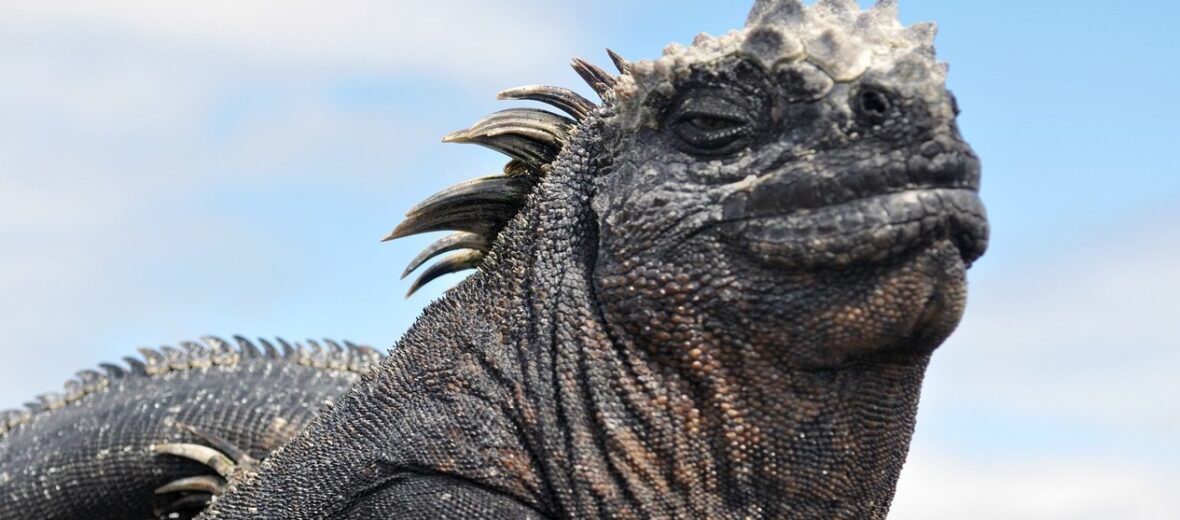
The marine iguana of the Galápagos Islands are so infamously unattractive, even Charles Darwin described them as “hideous-looking, clumsy lizards.” But what these relatively unattractive critters lack in looks they make up for with their incredible ecological adaptations. Everything from feeding on sea grasses and algae, to leaping from rocks to the rough sea below, to blowing snot from their noses to expel excess salts. These are incredible lizards that are also, unfortunately, on the IUCN list as Vulnerable.
First the Stats…
Scientific name: Amblyrhynchus cristatus
Weight: Up to 3 lbs.
Length: Up to 3 feet, plus a 2+ foot tail
Lifespan: Up to 60 years
Now on to the Facts!
1.) Marine iguanas, like other iguanas, sneeze to eliminate salts from their body; which helps keep their kidneys healthy.
2.) The males prefer larger females because they lay the largest eggs and this ensures a stronger brood.
3.) When they finish a dive for algae they have to bask in the hot sun to bring their temperature back up, as their core temperature can drop to as low as 50°!
4.) Only the larger adults dive for food.
5.) Adult iguanas can dive up to 9 feet in search of algae and sea weed.
But wait, there’s more on the marine iguana!
6.) Iguanas nod as a threatening gesture. They bob their heads as a way of saying “I’m the boss here!”
7.) Marine “iggies” are dark grey to black in color to help absorb sunlight and heat themselves quicker.
Did you know…?
These reptiles can lose up to 20% of their body mass during lean times, where food is scarce; like during El Niño. They do this willingly and scientists still don’t know how they do.
8.) Introduced dogs and cats, that now live on the islands, have caused a large decline in their populations.
9.) While swimming, marine iguanas can drop their heart rate to half of what it is while on land. This enables them to stay underwater for up to 40 minutes at a time.
10.) When a Galápagos hawk is approaching, mockingbirds sound a call of danger. When the marine iguanas hear this they run and hide in rock crevices and in the water.
Now a Short Marine Iguana Video!
Also, check out the Critter Science YouTube channel. Videos added frequently!
Want to suggest a critter for me to write about? Let me know here.



